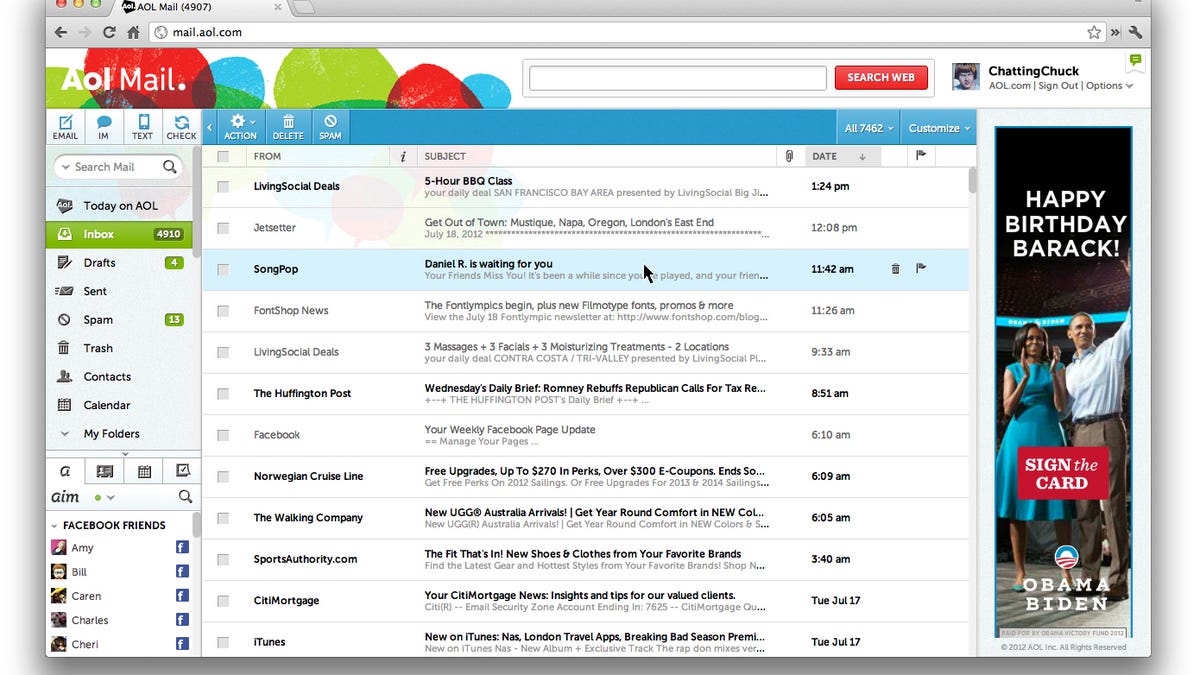After 8 months, AOL e-mail refresh finally complete
Stodgy old e-mail service gets a shiny new design. No reason to jump over to it if you're not on it already, though.

After five years of inattention, in 2011 AOL execs finally began to put some serious resources into the company's e-mail service, AOL Mail. Starting in December of last year, AOL began rolling out a new version of the service to its 24 million users. Today, the news is, the upgrade is complete.
That's right, it took eight months to upgrade the system.
Why?
David Temkin, SVP of mail and mobile, said that redesigning this service was, "kind of playing with fire." AOL e-mail drives "a ton" of traffic to AOL content sites, "from Huffington Post on down," Temkin said. "There's just lots of money and users on the line."
AOL started the upgrade process slowly: 1 percent of users in December got the new product. Then a bump to 2 percent, then 5 percent. At each step, the team looked at usage data and feedback. It was difficult. As everyone who has an online or media product knows well, even with changes for the better, "users get disoriented." Which is another way of saying they complain loudly.
Temkin's team had to learn how to "onboard" users who were already onboard. Since I'm a hip Gmail-using guy who lives in the technological bubble of the West Coast, I had to joke about all the old folks AOL has and how hard it must be to re-educate them on the changes. Temkin said that, yes, the audience skews older, but that about 25 percent of it is in the 18- to 34-year-old demographic.
He says they also have the highest household income of the major mail services, and the most usage per month.
The trick was just learning what they want, in part by watching them not click on what they didn't. For example, "Users like color, and they don't like gray." Also, putting some visual space around key features, like the search box, improves use of them. And taking the ads out of the main e-mail window and sticking them in a sidebar actually improved click-though on them. Dramatically, it turns out. Both ads and search are monetizing better, Temkin says -- about 15 percent to 20 percent better.
The new design also helps users see and use real-time communication features, like SMS, AOL Instant Messenger, and the service's integration with Facebook Chat, Temkin says.
AOL Mail is the No. 4 service, after Yahoo, Google, and Microsoft mail. Can it move up in the rankings? I'm skeptical about that, but it does have a committed audience, and not only do they deserve a modern product but AOL really should be making some money from them too. "We want to turn AOL into a growth product," he says.
One way to do that is to do what the company just did: Update the service. More than once every five years.

